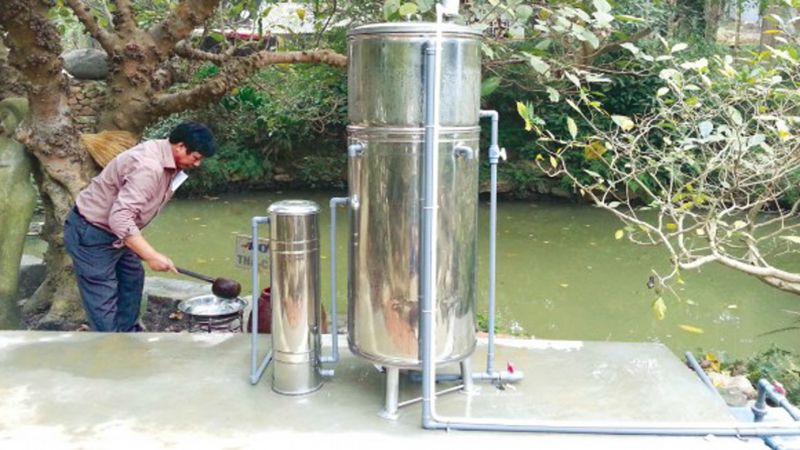Scientists Made A Filter To Remove Arsenic From Drinking Water
Published on by Water Network Research, Official research team of The Water Network in Technology
University of Technology in Sydney researchers have taken out a $500,000 "Technology Against Poverty" prize for creating a low-cost, easy-to-operate way to remove arsenic from drinking water.

The team, led by Distinguished Professor Vigneswaran and Dr Tien Vinh Nguyen of the School of Environmental and Environmental Engineering, Faculty of Engineering and IT, focused their project on removing pollutants from groundwater in the Red River Delta of Vietnam - an area densely populated with high levels of arsenic in groundwater leading to serious public health issues.
Arsenic poisoning is a slow process, with people often unaware they are being poisoned as they suffer major health problems including cancers, gastrointestinal disorders, muscular weakness, nerve tissue injuries, blackfoot disease and intellectual impairment.
Current systems are neither cost-effective nor efficient at removing arsenic. The UTS team is working with local Vietnamese partners on a local solution to a local problem in an area of about 20 million people. Partners include the Vietnam National University (VNU), Vietnam Academy of Science and Technology (VAST) and local manufacturers.
They are deploying inexpensive technology to provide a model for clean water, which can be adopted worldwide to improve water quality for 130+ million people in the 70 + countries worldwide experiencing toxicity from naturally-occurring arsenic.
"There are three key components to this system: an organic membrane, a tank/drum in which the membrane is inserted, and an absorptive cartridge made from locally-available industrial waste products," says Distinguished Professor Vigneswaran.
Local manufacturers can produce, install and maintain the membranes and the cartridges, creating local jobs in an area of high population growth.
"The filtration can be powered by gravity, water pump solar or by hand. Membranes will last up to three years, while the cartridges absorb the arsenic and are periodically removed (every three to six months) and replaced with new ones. The waste cartridges will be turned into safe building materials, so the system safely disposes of arsenic waste."
The system will also remove bacteria and solids from the contaminated groundwater, delivering water which is clean and safe to drink, and is scalable: for example, a 10 cubic metre system will provide uncontaminated water for 100 people.
"So this sustainable system will both maximize locally sourced resources and minimize arsenic waste and environmental pollution, improving health and quality of life," he says.
Read more at: Gizmodo
Media
Taxonomy
- Treatment
- Contaminant Removal
- Filtration
- water treatment
- Water & Wastewater
- Pollution
1 Comment
-
another recent article about this https://pacetoday.com.au/australian-water-filtration-tech/